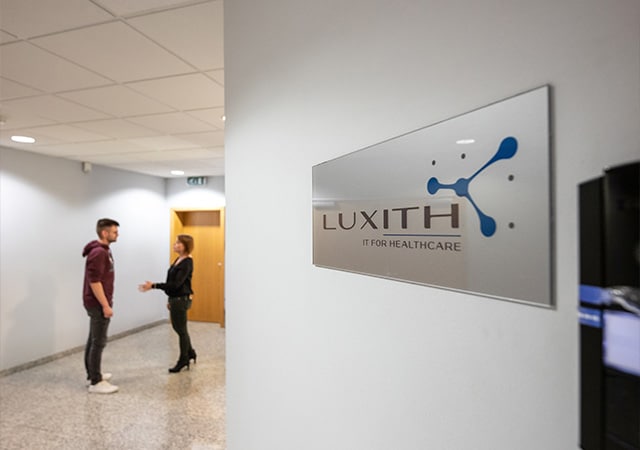Customer Case Study
Luxith,
Luxemburg
Luxemburg
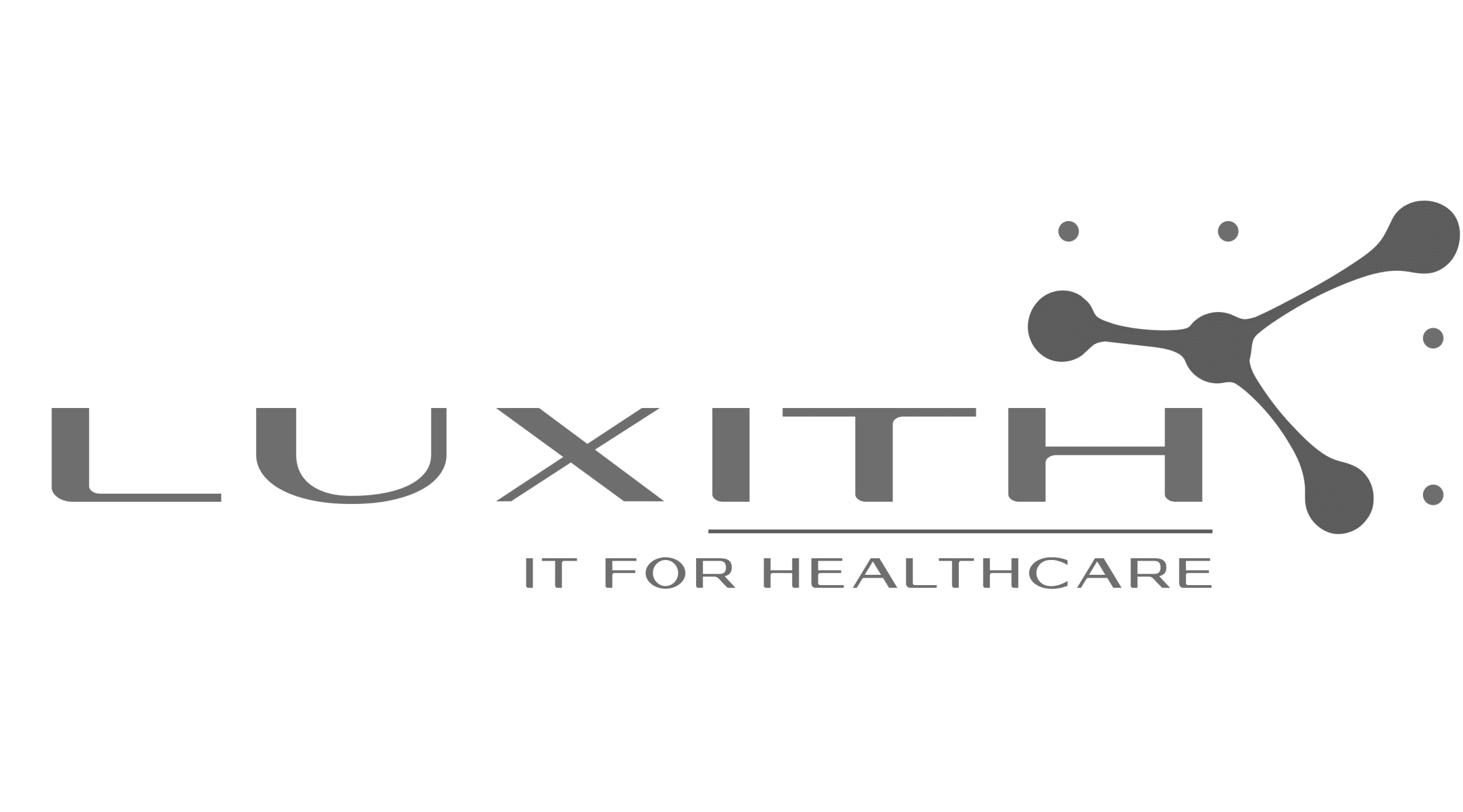
Built on AGFA HealthCare’s VNA and XERO® Universal Viewer, a single medical imaging archive for all four hospital groups of the Grand Duchy of Luxembourg is enhancing image sharing and collaboration.
Luxembourg’s hospitals go live with national medical imaging archive and XERO® Universal Viewer
Director of LUXITH
Head of medical imaging, interoperability and development at LUXITH
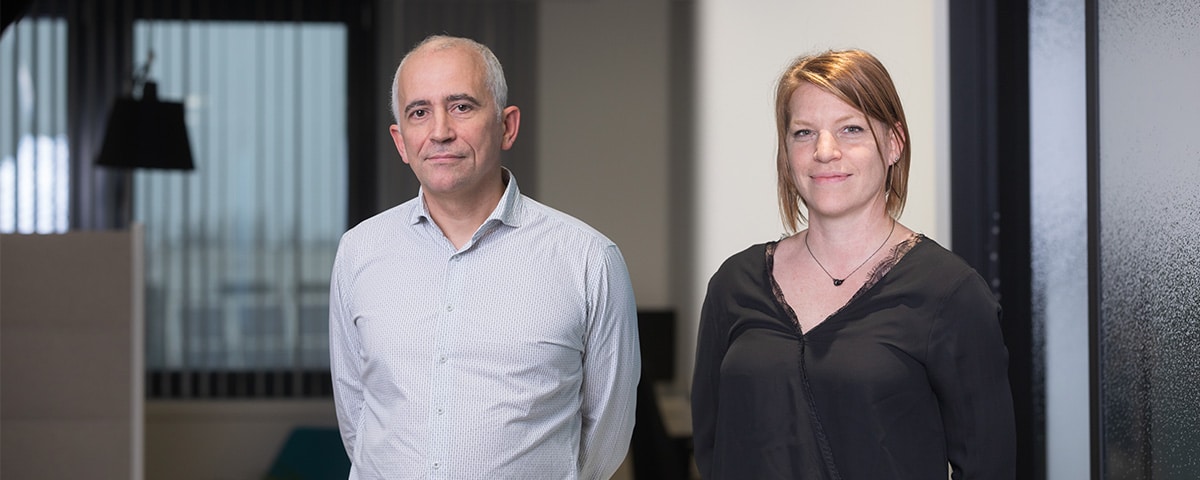
While the Grand Duchy of Luxembourg may be small in size, it thinks big in terms of innovation and commitment to the health and well-being of its residents. In July 2021, a major step of an ambitious project was achieved, when all four hospital groups in the country went live with the National Medical Imaging Archive (ANIM). The platform for this large-scale initiative was provided by AGFA HealthCare, which collaborated closely with LUXITH G.I.E., the agency responsible for the project.
The joint archive enables easy access to images through the ‘shared medical file’ (Dossier de Soin Partagé/DSP) hosted by Luxembourg’s national Agence eSanté. The DSP is a medical record containing a patient’s pertinent documents, which can then be accessed by health professionnals and the patient.
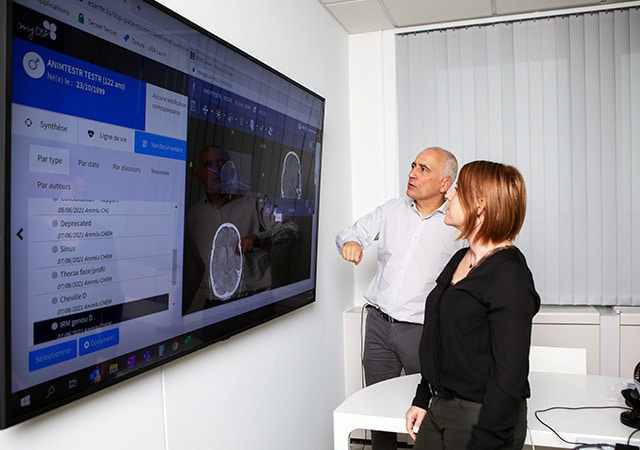
What is the National Medical Imaging Archive (ANIM)?
Goals
- Support integrated care across the healthcare sector.
- National-level imaging platform enabling image sharing across all specialties.
- All patient images are accessible from any hospital in Luxembourg, via the eSanté portal and the patient’s shared medical file (DSP).
- Patient rights and confidentiality, including data security requirements, are respected.
ANIM is a shared vendor-neutral archive that centralizes and secures the medical images generated at the 15 sites of the country’s four hospital groups: Centre Hospitalier Émile Mayrish (CHEM), Centre Hospitalier de Luxembourg (CHL), Hôpitaux Robert Schuman (HRS) and Centre Hospitalier du Nord (CHdN).
The centralized archive was provided by AGFA HealthCare, and is hosted at two highly secured datacenters by hosting company EBRC. In all, over 860,000 medical images will be archived each year in the national data center.
A national VNA, managed by LUXITH
The seeds of the National Medical Imaging Archive project go back well before the establishment of LUXITH, explains Christophe Nardin, director of LUXITH. “In 2009, an independent consultant carried out a study on the hospital sector in the Grand Duchy of Luxembourg, and made a number of suggestions. Some of these were ultimately not adopted, but the advantages of a shared imaging archive were clear to all the hospitals.
For example, saving costs by eliminating CDs with patients’ images, reduced archiving infrastructure on the different hospital sites, and improved access to images. This last one is particularly important, because it can significantly reduce unnecessary repeat images for patients. These are not only costly, but increase the patient’s radiation dose exposure.”
Géraldine Vidou came on board as the head of medical imaging, interoperability and development, and in 2015 a competitive dialogue was launched.
“This involved us coming together both with the vendors and the hospitals to work out the specifications for the project, with all the stakeholders directly involved and communicating their needs,” explains Géraldine.
The competitive dialogue process ran through 2016, and included seven workshops plus a Proof of Concept (POC) at two hospitals.
In 2017 AGFA HealthCare was awarded the contract.
“Coming together both with the vendors and the hospitals to work out the specifications for the project, with all the stakeholders directly involved and communicating their needs.”
Géraldine Vidou
Head of medical imaging, interoperability and development at LUXITH
Image archiving and sharing
“The next year we focused on implementing the archiving solution,” Géraldine continues. “The archive part was essentially the infrastructure. Then we needed to connect the hospitals’ different PACS to the national archive, and migrate the historical data.” Once that was complete, attention was turned towards enabling image sharing via the DSP. As part of Luxembourg’s strategy to enable integrated care across the healthcare sector, the national eSanté agency implemented the eHealth Portal. Among its goals were the establishment of a shared medical file (the “Dossier de Soin Partagé/DSP”) and the possibility to exchange all of the patients’ health-related information. The archive thus had to integrate with this Portal to make all images available through it.
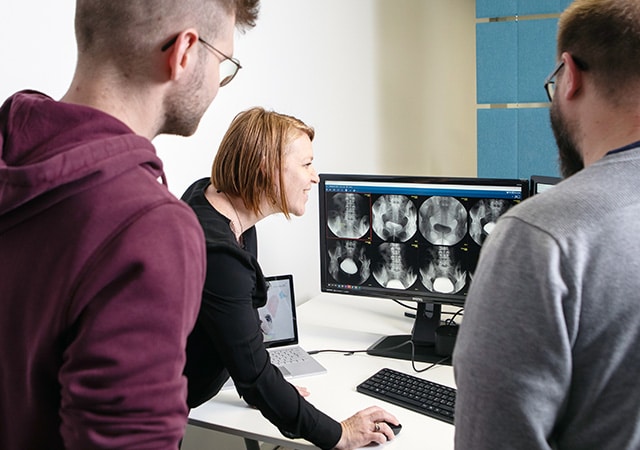
Facts and figures
300 TB
of legacy data migrated
860,000
studies archived per year
15 sites
All sites of the four hospital
groups connected to the VNA
Smooth implementation of a multi-faceted project
The four Luxembourg hospital groups went operational with the archive between June 9 and July 9, 2021. Despite the Covid-19 pandemic, the implementation went smoothly, due to the careful planning and full participation of all the stakeholders.
“The workshops that were part of the competitive dialogue process played a big part in the project’s success. Whether we were discussing use cases or very technical aspects of the infrastructure, the right players were always there, including from the hospitals.
This enabled a lot of transparency on what the hospitals wanted, and what the technology would allow. If a hospital asked for something that wasn’t possible, the vendors’ experts could explain why.
This was key for managing expectations in a project with multiple stakeholders,” Géraldine describes.
“It was not always an easy process,” adds Christophe. “When you bring several experts into a discussion, they need to find ways to listen to each other and think beyond their own area of expertise. There are many different perspectives in a large-scale and complex project such as this one, and each is valid.”
“Whenever you have a major IT project, there will be surprises, but we were prepared for them. For example, the evolution of imaging towards more precision scanning impacted imaging volumes beyond our forecasts. But mostly our expectations and projections were confirmed.”
Data privacy and security
The archive is not a single repository in which all images from all the hospitals are pooled. Instead, each hospital has its own, separate space within the single VNA. Images are thus not shared directly between hospitals. Instead, each archive is linked to the eSanté health portal, and image sharing goes through the patient’s DSP.
“This was a purposeful choice, ‘security by design’,” says Christophe. Even before the passing of the GDPR, the Luxembourgian stakeholders were highly focused on ensuring data privacy and security. “Our expectations and requirements went beyond what was common at the time. We needed a pioneering approach – which we got.”
Easier image sharing
The hospitals are already feeling some of the benefits of the shared archive and easier image sharing. “Previously, when hospitals shared an image from one PACS to another, the image actually moved from the first hospital’s PACS to reside on the second hospital’s PACS, which meant the originating hospital lost control over it.
As a temporary solution, and to comply with the GDPR, we used image cloning. But that was really a band-aid. Now, with ANIM, doctors and patients can access the patients’ images easily and securely, without any extra effort from the hospital. In addition, the hospitals have freed up archiving infrastructure in their own systems, which they can use for other, value-added purposes.” There are still some areas for future development, Christophe emphasizes. “With the current sharing system, physicians in one hospital cannot do side-by side comparisons with images from another establishment. Also, only recent images may be shared. This has nothing to do with the solution itself; it is to ensure data privacy and comply with the GDPR. For oncology in particular, access to more historical images would have been a big benefit. But both of these will be solved over time.”
He concludes, “I don’t want to say the project is ‘finished’, because it is intended to advance and expand; there are always new needs to consider and to meet. Furthermore, the imaging sector in Luxembourg is evolving, and we will have to be ready for the changes. But certainly, this was the big goal we had been working towards for quite a while. It is a major accomplishment.”
About LUXITH
LUXITH is an economic interest group established by the Luxembourg Hospitals Federation to provide IT services, software and shared IT infrastructure to the country’s hospitals.
Next to medical imaging projects, they also provide the hospitals with software for human resources and billing; and services related to data privacy and security, as well as interoperability.
Created in 2012, today LUXITH is also responsible for implementing the strategic IT plan for the hospital sector, which provides for the progressive pooling of IT skills in hospitals.
